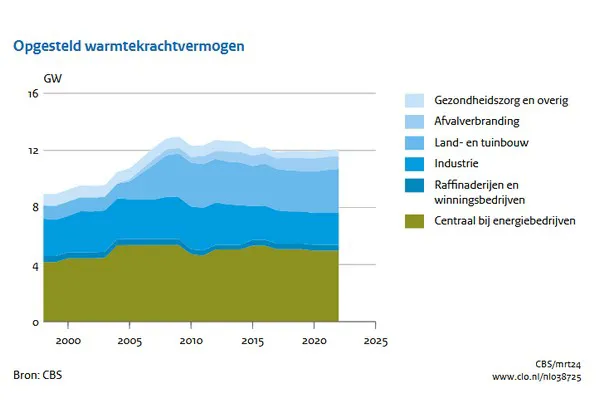The CHP capacity in the Netherlands remained virtually unchanged in 2022 compared to 2021. By the end of 2022, the installed electrical cogeneration capacity in the Netherlands was 12.1 GW. The CHP capacity accounted for 22 percent of the total installed electrical capacity in the Netherlands for 2022. This share has been decreasing since 2009, mainly due to the growing capacity of solar panels and wind turbines in the Netherlands.
Between 2005 and 2008, the CHP capacity grew by an average of 6 percent per year. During this period, the CHP capacity mainly increased on a decentralized basis as more gas engines were installed in greenhouse horticulture. In 2009, the total CHP capacity reached a peak of 13 GW. Since then, it has generally declined slightly and fluctuates around 12 GW.

In 2022, 55 percent of the electricity generated in the Netherlands was produced by the combustion of fossil fuels. The heat generated in this process can be usefully employed through the application of Combined Heat and Power (CHP). The higher efficiency achieved from the fuels limits the emission of harmful substances, such as the greenhouse gas carbon dioxide (CO2). Therefore, Combined Heat and Power makes a significant contribution to achieving the objectives as formulated in the Kyoto Protocol (1997) and the Paris Agreement (2015).
Source: Environmental Data Compendium
